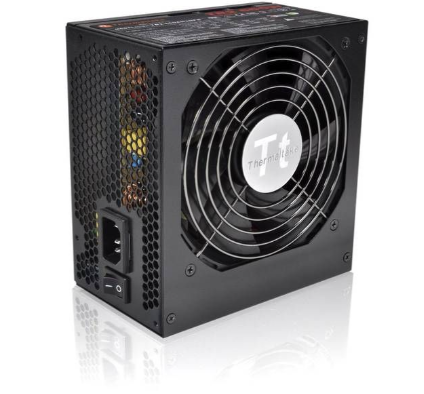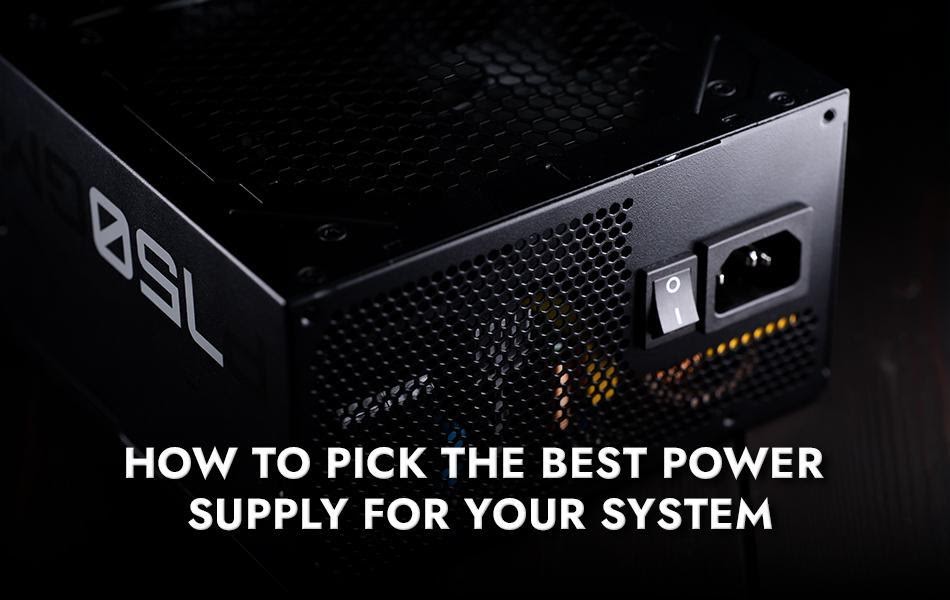A power supply is a device that provides electricity to a computer’s internal components. It is an essential part of any desktop computer, yet we tend to overlook it when building a new system or upgrading an existing one. Selecting the wrong one could endanger the entire system. That’s why we will go over the fundamentals of the best PC power supply and provide you with the knowledge you need to understand why having the correct PSU is critical, and why going with the cheapest choice is not always the best option.

First Things First
Though the PSU you buy should include all of the cords you need, it is still a good idea to know how the various connections appear. The specific wires you will need will depend on the details of your setup, but you will almost certainly be dealing with the following:
24-Pin Power Connector: Power distribution varies per motherboard. However, the 24-pin connector is commonly used to support essential components like the motherboard and PCIe.
4/8-Pin Power Connector: The processor of your computer is powered by this connection. Modern processors demand more power than a 24-pin motherboard can provide, which is why a 4/8-pin cable was included. In a typical arrangement, the CPU cable connects to the top left side of the motherboard, near the I/O. This, however, may differ depending on the manufacturer.
6/8-Pin Power Connector: Some GPUs can obtain enough power from a PCIe slot, while others need a specific power connection setup. Most PSUs include cables that may be utilized in a number of configurations, including 6, 8, 6/6, 8/6, 8/6, and 8/8, as well as 8/8/8-pin connections. To avoid needing to run additional wires, most budget power supplies will often give numerous connections on a single cable, and for many users, this will work the same as connecting multiple cables. Before you buy a power supply, confirm that it contains the connectors your GPU requires.
SATA Power: The SATA Power connection is used to power SATA storage devices. Other devices, such as RGB hubs and fan controllers, have now embraced the standard. To decrease the number of cords needed, many best budget power supplies include several SATA connectors on a single cable.
4-Pin Molex: This is a rapidly disappearing legacy connection that has been largely superseded by SATA. Molex connections are typically found on uncommon accessories like water cooling pumps.
Your Wattage Requirements
A commonly asked question when buying a new power supply is, “How many watts would be enough?” And the answer is, “It depends on your system’s unique requirements.”
More sophisticated systems, in general, require more watts to operate. A desktop with a liquid cooling system, a high-performance motherboard, and twin GPUs will require a high-power PSU.
It is impossible to make a precise suggestion without knowing what hardware you are using, but utilizing a power supply calculator [many suppliers provide them], or assessing the specific power demands of your system’s internal parts and adding them up, can give you an idea of how much power you will need.
In most cases, it is preferable to go with a higher watt output to be on the safe side. If you estimate that your system will consume 500 watts of power (a popular figure for a simple gaming setup), a power supply with a 600 or 650-watt count may be a smart choice. It will offer you flexibility for future improvements.
When evaluating higher-wattage power supplies, keep in mind that a 650-watt power supply does not utilize 650 watts by default. Regardless of the maximum capacity output, if your system requires 400 watts, your power supply will deliver 400 watts. Higher power does not always imply higher energy consumption; it just indicates it may deliver more watts if need be. However, having a very high-wattage power supply, if your system does not require it, is pointless, so you could be better off choosing a power supply that meets your wattage requirements.
You should also think about your new PSU’s continuous vs. peak power capability. The peak power is the highest amount of power a power supply can provide, while the continuous power is the wattage a power supply delivers under normal circumstances. When you strain your PC to its limitations, such as when playing high-spec games or doing hardware benchmarks, you’ll generally reach the peak power.
Your PSU should be able to manage a higher output for a short period of time if there is a sudden demand for additional watts, but it should not become the norm. You should ensure that the power supply you choose has enough continuous power production, rather than focusing exclusively on its peak power capability.
Protection
System safety is a concern, as it should be with anything that deals with enormous volumes of electricity. Fail-safes should be incorporated into a decent power supply, not just to safeguard the PSU, but also to keep your system safe in the event of an unforeseen event, such as a power surge.
The power supply and motherboard are the only PC components that connect directly to almost every other piece of hardware in your system. Because of the PSU’s unique position inside the PC’s structure, ensuring that it has built-in protection can also help protect the rest of your hardware.
It is important to note whether the power supply you are considering includes built-in protection, such as OVP (Over Voltage Protection), which automatically shuts down the PSU if an excessive voltage is detected. Short circuit protection, for example, is a useful feature if you have power fluctuations.
You should also connect your computer to a surge protector. These hardware-saving devices are meant to preserve your system by redirecting potentially destructive power surges away from your costly components.
Efficiency
When it comes to picking a desktop power supply, wattage is essential, but PSU efficiency is even more so. Inefficient distribution wastes energy and generates additional heat, reducing the component’s lifespan.
Due to the importance of this element, an unbiased grading system has been created. An “80 Plus” rating is commonly found next to a precious metal on many power supplies. To receive this grade, a power supply must be at least 80% efficient, meaning that no more than 20% of the energy is lost as heat.
This efficiency rating is based on performance in a 115-volt system, and the values improve as you progress up the precious metals ladder.
Your power supply will consume less energy and create less heat if it is more efficient. You will want to establish a balance that matches your demands, though, because more efficiency usually comes at a larger expense.
Even the most energy-efficient PSUs create heat, and most of them require fans to dissipate it. Many power supplies are built such that the fan only turns on when it is needed, such as when the PSU reaches a specific temperature. Noise reduction is aided by features like these.
There are also liquid-cooled power supplies for a totally quiet experience for those who want to push things to the limit of feasibility.
Final Words
Choosing a power supply should not be a last-minute decision.
Finding the best one for your system should include more than just looking for the most wattage at the lowest price. You should think about the form factor, efficiency, amperage, protection, and the cords you’ll need, as well as any additional features you want.
Take your time to pick wisely since the best PC power supply may last for years and have a significant influence on your PC’s efficiency.
It will make your computer happy.For best power supplies and other computer components visit Memory Clearance
